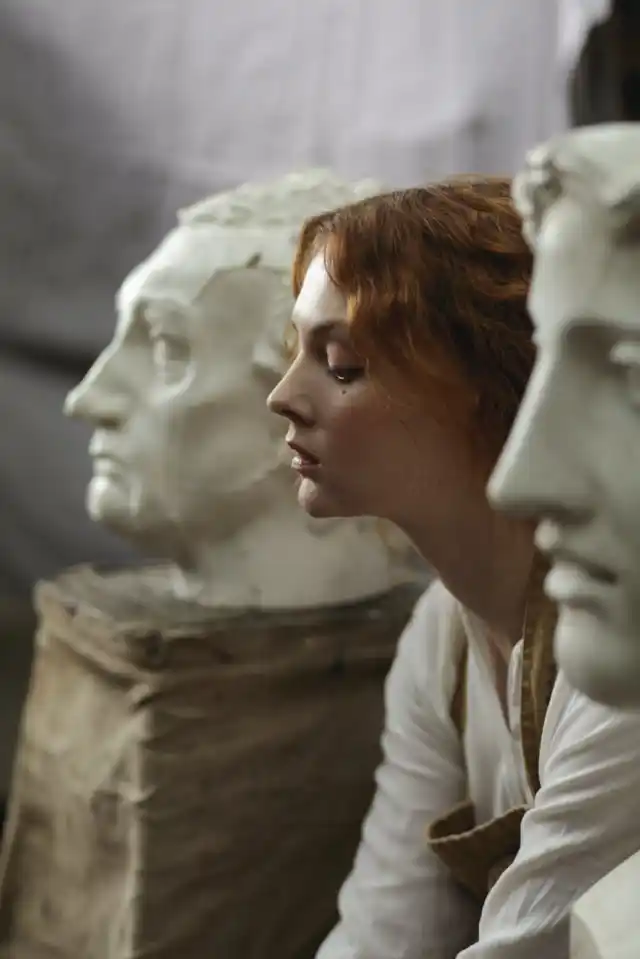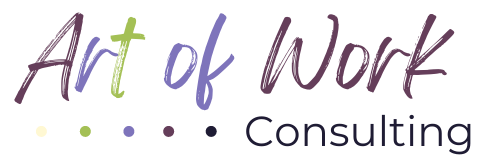Creativity and Vulnerability

“Vulnerability is the birthplace of innovation, creativity and change.”
― Dr. Brené Brown
Artists are inherently creative souls. Creativity is their business. So, how can those of us who are entrenched in the traditional business world unleash this trait in a way that allows us to become artists in our workplace? Let’s begin with the creative process itself and jointly explore a necessary aspect of this process that many may shy away from.
Artists not only feel a sense of personal accomplishment in the completion of their artwork (painting, play, film, poem, book, dance or music performance, etc.), they typically thrive on the conceptual and construction process, finding that creating itself has its own inherent rewards. Although it can be a difficult, often grueling, process to write a book or song, to create a painting or sculpture, the artist wouldn’t remove this activity from their experience even if they could. The process of creating can be a soul-feeding, even spiritual, exercise that often involves catharsis, personal growth, and revelation.
Julia Cameron, author of The Artist’s Way, a beloved workbook that has been utilized for twenty-five years by artists and non-artists alike to unblock and open up their creativity, describes what she has witnessed when students begin to find their creative way. She writes, “the sheer physical transformation can be startling, making me realize that the term enlightenment is a literal one. Student’s faces often take on a glow as they contact their creative energies.”
How cool is that? Wouldn’t it be great to find that kind of “enlightenment” in any type of work context?
Well, you may not like this next part. It is my belief that you can only truly achieve this state to its fullest by allowing yourself to feel a little uncomfortable. Artists get more confident as they get more adept at their craft, but every blank page for a writer, every empty canvas or block of clay for a painter or sculptor, every first day of rehearsal for the director, actor, designer on a theatrical or film production comes with some element of fear, or at a minimum, some nerves. To my thinking, this discomfort, this state of vulnerability, is critical to the process. If we are too comfortable, our work can become routine and uninspired. As stated in the quote at the beginning of this article, being vulnerable opens the door to inspired and innovative creativity.
But who wants to feel vulnerable — especially at work? Well, let’s go a little deeper to provide a better understanding of that important term as it relates to creativity and to the artist’s process. Author and researcher, Brené Brown, Ph.D, LMSW, in her book, Daring Greatly: How the Courage to Be Vulnerable Transforms the Way We Live, Love, Parent and Lead defines vulnerability as “uncertainty, risk and emotional exposure.” Sounds scary, but she also explains that “[v]ulnerability is the core, the heart, the center, of meaningful human experiences.” (In addition to reading her book and listening to her insightful podcasts, I suggest watching the Ted Talk which put Dr. Brown on the map: “The Power of Vulnerability.” It’s a very eye-opening introduction to this concept from both a personal and scientific perspective).
I don’t profess to be an expert on the topic like Brené Brown, but I think most artists would agree that vulnerability and creativity go hand in hand. The actor who allows herself to inhabit a character whose experiences draw on emotional aspects of herself that may not be the prettiest or that cause her personal discomfort to explore, is the actor who provides the most truthful and affecting performance. If the visual artist fails to challenge himself by considering a subject he has not approached before, or exploring a new technique, or allowing his own story to be exposed in the images he creates, his work can become static, or worse, stale. People might still appreciate his artwork, but it won’t have the emotional resonance it could have. It also won’t have the same impact on the artist himself. To reference a previous blog of mine, his “yellowness” starts to fade. See The Art of Work – The Secret Ingredient
As a songwriter and a music lover, the songs I most enjoy listening to — and those that I feel the most satisfied when writing — are those that expose the artist and audience to emotions that the musicians themselves are experiencing or exploring. Those that the listener can relate to and share in. The freedom to allow these personal connections to be expressed to the fullest only comes by opening oneself up to a vulnerable state. And, yes, I did say freedom! More on that in a moment.
I’ll give you an example from my own experience. I hesitate to do so, as it makes me feel quite vulnerable to tell this story! But here goes. Last year after the brutal death of George Floyd in Minneapolis, I composed a song to help me personally deal with the pent-up emotions I was feeling about this event. As a white woman, the writing of the song made me uncomfortable and I broke down often during its creation. But where the vulnerability really put in an appearance was in my decision to video and share the song (with poor lighting and my very basic guitar accompaniment front and center!) on social media. I had not posted solo performances of any of my songs before, and in this case, I was really exposing myself: my creation, my reaction to the event, my emotions, my musicianship, and my voice — both my voice as a writer and my singing voice. Scary. But also cathartic — and ultimately freeing. I still struggle with my emotions about this event and others like it, but letting my guard down and exploring my own feelings publicly really helped me gain some footing around what was going on and spurred me on to consider ways that I could be a better advocate for social change.
So we’ve established that creativity is stimulated by vulnerability and that this vulnerability can be freeing for the artist. But, how does this work in an office setting? Well, frankly, it begins with leaders who allow for this type of vulnerability to exist without judgment. These leaders can achieve this by modeling and encouraging behaviors that open the door for others to feel comfortable having open conversations and interactions with their coworkers.
Please understand that this doesn’t mean that managers and executives need to be overtly emotional at work (although, I do think that can be okay, if it is honest and real!). It means that they are prepared to be open with their peers and direct reports. They are ready to share their own personal journey, willing to acknowledge their own weaknesses or failures, to use them as learning moments for themselves, for their team, and for the organization.
Let me be clear: vulnerability is not weakness! Vulnerability and strength are not mutually exclusive. Yes, leaders need to show strength so that their workforce can feel confident in following them. The vulnerability I’m talking about is the type that equates more closely to courage. And, courage is certainly not a weak quality.
After writing this section, I discovered a quote that perfectly sums up what I’ve been personally exploring and attempting to articulate. It is from Howard Schultz, the former CEO of Starbucks who took the brand from a small regional business to the mammoth international chain that it is today. He states, “The hardest thing about being a leader is demonstrating or showing vulnerability… When the leader demonstrates vulnerability and sensibility and brings people together, the team wins.”
We can deduce from Schultz’s comments that a leader who models this type of vulnerability will not only earn the respect and trust of their staff, but will also validate the freedom of their team to welcome vulnerability into their own work — the type of vulnerability that can lead to open exploration, collaboration, creative thinking, and innovative action!
As you might imagine, this is really just the tip of the iceberg on this topic. We haven’t really established any guidelines around what this type of creative vulnerability could look like in the reality of the office setting. But, we will! I am continuing to explore these ideas and look forward to examining them with you in future blogs. Hope you will join me on this journey! And, please share your thoughts. We’re in this together!
